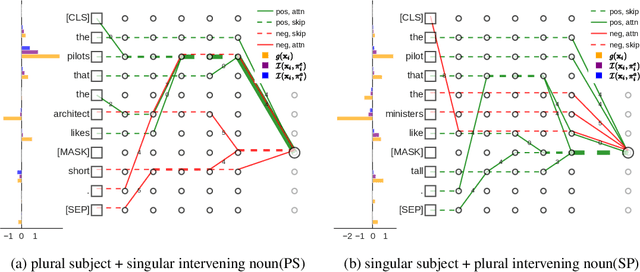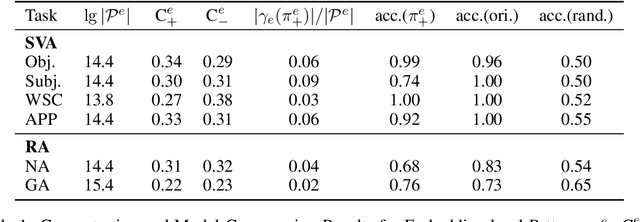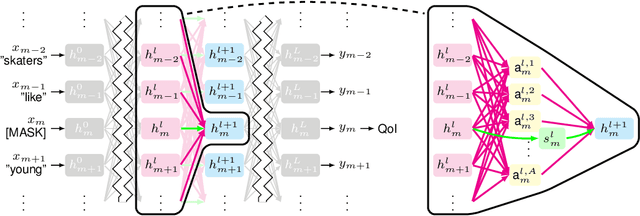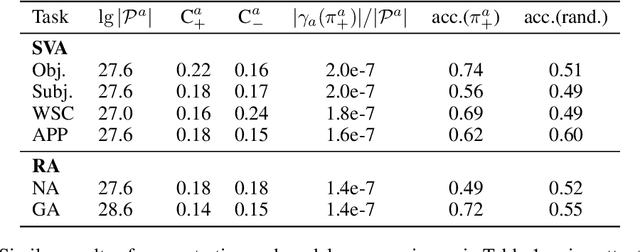Abstracting Influence Paths for Explaining (Contextualization of) BERT Models
Paper and Code
Nov 02, 2020



While "attention is all you need" may be proving true, we do not yet know why: attention-based models such as BERT are superior but how they contextualize information even for simple grammatical rules such as subject-verb number agreement (SVA) is uncertain. We introduce multi-partite patterns, abstractions of sets of paths through a neural network model. Patterns quantify and localize the effect of an input concept (e.g., a subject's number) on an output concept (e.g. corresponding verb's number) to paths passing through a sequence of model components, thus surfacing how BERT contextualizes information. We describe guided pattern refinement, an efficient search procedure for finding patterns representative of concept-critical paths. We discover that patterns generate succinct and meaningful explanations for BERT, highlighted by "copy" and "transfer" operations implemented by skip connections and attention heads, respectively. We also show how pattern visualizations help us understand how BERT contextualizes various grammatical concepts, such as SVA across clauses, and why it makes errors in some cases while succeeding in others.
 Add to Chrome
Add to Chrome Add to Firefox
Add to Firefox Add to Edge
Add to Edge